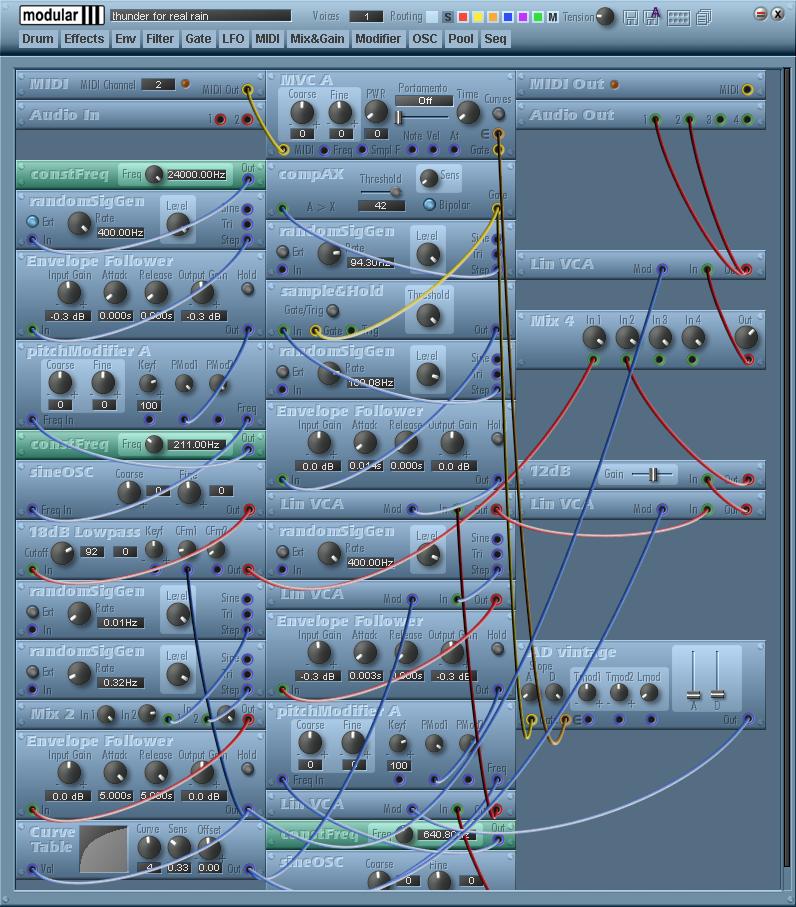Some of you may recall this from Sonic
Core's demo for Modular III. It's a
series of patches I made to create a sound scene of a thunder storm. It
consisted of nearby lightning strikes, faraway rumbles, rain, and wind. The
rain and wind part I'm sure many seasoned Modular fans can figure out in no
time. The lightning was the hard one.
At it's most basic, it's a sine wave with its pitch controlled by tightly
designed noise. The overall pitch of the noise is controlled by a bunch of
AD (attack and delay) envelopes, giving the impression of a lightning strike
that has an intense attack (high central frequency), and quickly decays into
a low rumble (lower central frequency)
Most of the modules you see, especially the sample and hold modules, are
there just to add a bit of randomness. It was particularly important that
the pitch curve was not a clean curve (straight from the AD envelope)
because that won't cause the "rumbling". The rumble comes from slow but
random fluctuations in pitch and filter frequency. So it looks like a bunch
of modules, but they're there just for variety. Which is nice, because
imagine doing that on a prefab synth. You want to add a bit of randomness
here, here, and there.. but you only have two LFOs. You're stuck.
A fun trick I did with the AD was to mix two of them together to get an extra
punchy attack. In the middle column, you see two AD Vintage modules: one with
a long decay, and another with a very short decay. The short one is mixed
into the long one, so I can have a super fast attack drop-off, and then a
long tail. Great for creating the "crack" at the start of the lightning
strike, and connecting it to the long boom. You can't do this stuff with
just one EG, no matter how much you mess with the curve knob. You just don't
get to think like this with prefab synths. Modular is a fundamentally
different approach to sound design.
One last interesting thing this patch does is, it triggers itself. In the
middle column, up at the top, you'll see a randomSigGen, connected to a
compAX. The randomSigGen keeps throwing out random numbers, and when it's
over the threshold on compAX, the gate (yellow cord) gets triggered. You
can see how the yellow cord connects all the AD generators and sample&hold
modules throughout the patch. All those get triggered at once, and bam, you
have a lightning strike. |
|

|